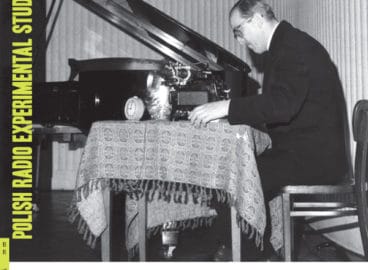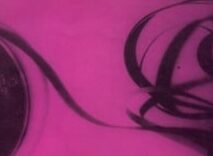This text was originally published under the theme “Polish Radio Experimental Studio: A Close Look”. The theme was developed in partnership with Muzeum Sztuki, Łódź (MSŁ). It was edited by Magdalena Moskalewicz, MoMA with Daniel Muzyczuk, MSŁ. The original content items in this theme can be found here.
Inhabiting a space between studios that were dedicated solely to the production of autonomous works, such as GRM (Groupe de Recherches Musicales) in Paris and WDR (Westdeutscher Rundfunk) in Cologne, and facilities oriented toward work for radio and television, such as the Radiophonic Workshop of the BBC (British Broadcasting Corporation), Polish Radio Experimental Studio (PRES) occupied an interesting position that enabled it to adopt a slightly unusual modus operandi.

What is the use of applying the scientific concept of experiment to the art of music? In his 1953 essay “Vers une musique expérimentale”1Pierre Schaeffer, “Vers une musique expérimentale,” La Revue musicale 236 (Paris: Richard-Masse, 1957). (Towards an experimental music), Pierre Schaeffer used the scientific term “experimental” to cover musique concrète, elektronische Musik, tape music, and “exotic music.”2John Cage in 1958 formulated a very different, more descriptive definition of the term “experimental”: “What is the nature of an experimental action? It is simply an action the outcome of which is not foreseen,” John Cage, “History of Experimental Music in the United States,” in John Cage, Silence (London: Marion Boyars, 1968), p. 69. The purpose of the text was clear: to end the author’s competition with Karlheinz Stockhausen (being at the same time competition between musique concrète and elektronische Musik), by taking it to the next level and by grouping the two competitors’ practices under a single term. In an interview with Marc Pierret, Schaeffer explained how he felt about “the experimental.” Asked whether he would have been more conservative with some of his earlier pieces had he written them later, and whether this might have prevented him from becoming the victim of his own experiments, the composer stated: “Certainly not! We always make the same mistakes again. I have no regrets! I tell you: I prefer an experiment, even aborted, to a successful oeuvre.”3Marc Pierret, Entretiens avec Pierre Schaeffer (Paris: P. Belfond, 1969), p. 105. Here Schaeffer defines “experiment” by setting the word in opposition to a “successful piece,” a closed structure, and thus aligns the experimental with the notion of research or trial.4Club d’Essai is the original name of the institute, which has grown into GRM (Groupe de recherches musicales) and is nothing more than a club of essays being understood as trials.

Polish Radio Experimental Studio (PRES)5In Polish: Eksperymentalne Studio Polskiego Radia. Sometimes also translated as “Experimental Studio of Polish Radio.”, established in Warsaw in November 1957, was named by its founder Józef Patkowski using Schaeffer’s terminology and meaning. In this way, Patkowski demonstrated a desire to ensure the widest possible scope for the project, which was intended to combine a contemporary music studio dedicated to producing works that would be presented in concert halls with one that would provide sound tracks and effects for cinema and radio. The particularity of the program and the fact that the studio was part of the biggest radio station in the People’s Republic of Poland enabled a hybrid foundation for the project. Inhabiting a space between studios that were dedicated solely to the production of autonomous works, such as GRM (Groupe de Recherches Musicales) in Paris and WDR (Westdeutscher Rundfunk) in Cologne, and facilities oriented toward work for radio and television, such as the Radiophonic Workshop of the BBC (British Broadcasting Corporation), PRES occupied an interesting position that enabled it to adopt a slightly unusual modus operandi. In order to grasp the nature of the work made there, we need to understand what distinguished PRES from all other electroacoustic and electronic music studios of its time. Józef Patkowski and Krzysztof Szlifirski, the technical director, were inspired by GRM and WDR, but the singularities of media management and the position of contemporary music in socialist Poland enabled them to produce a very different quality. We should note that for the same reasons, the works made at PRES are poorly known today in comparison with their French, German, and American counterparts.
PRES may be considered a product of the “Thaw” that changed Poland’s cultural politics. Its official founding date is significant. In 1958 the People’s Republic of Poland was a very different place than it had been a year before. The doors of the Studio were open to composers from both the Eastern Bloc and Western countries. They were drawn to PRES by the opportunity it offered them to work with highly skilled engineers, who were referred to as performers and were considered as equals to musicians. Therefore, the composers didn’t have to spend hours learning how to operate machines and instruments. Their compositions emerged through discussions with a person who knew the possibilities and limitations of the equipment. Thanks to this arrangement, PRES was visited by composers for whom musique concrète was just a chapter in their oeuvre, not a vocation. This working process resulted in a number of unusual pieces of music. The composer’s only obligation was to provide a score, which was needed mainly for administrative and legal purposes. Considering the fact that the music was composed on tape, this requirement may seem absurd, yet it produced some extraordinary scores that attempted to translate highly abstract sound qualities into graphic notation.
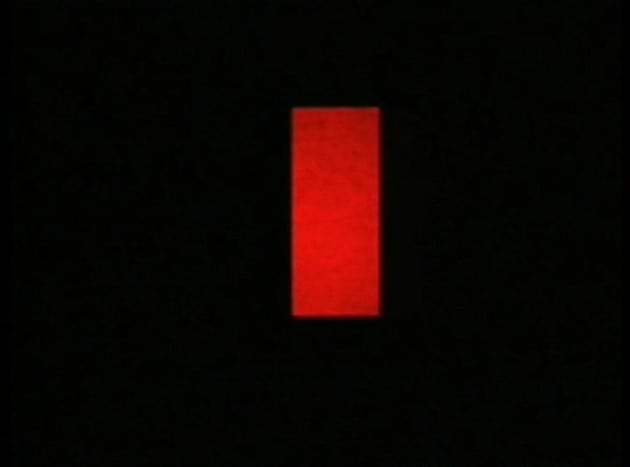
Utilitarian ends and especially services for cinema also gave rise to collaborations between sound engineers and neo-avant-garde artists, such as those associated with the Workshop of Film Form (WFF), from Łódź.6The Workshop of the Film Form (“Warsztat Formy Filmowej,” also called Film Form Studio), was composed of neo-avant-garde filmmakers based in Łódź between 1970 and 1977. Among the members were Józef Robakowski, Wojciech Bruszewski, and Ryszard Waśko. They were seeking to renew the language of cinema by experimenting with its form. Working on a conceptual level seems to have been a shared goal. Józef Robakowski mentions the search for new forms that was the main motivation for him and his circle. “My colleagues at the Workshop of Film Form also knew that there is a necessity to change both the image and sound in our films. We had to find new stylistic forms based mainly on counterpoint.”7“Całkowicie stracić kontrolę. Z Józefem Robakowskim rozmawia Arek Gruszczyński,” in: Magda Roszkowska, Bogna Świątkowska [eds.] Studio Eksperyment, (Warszawa: Bęc Zmiana, 2012), p. 43. However, the common ground with visual artists never became a common front. Collaborations were only occasional due to the Studio’s organizational framework. It has to be remembered that PRES was a unit within the massive structure of Polish Radio and had to conform to its daily routine and fulfill ordinary commissions.
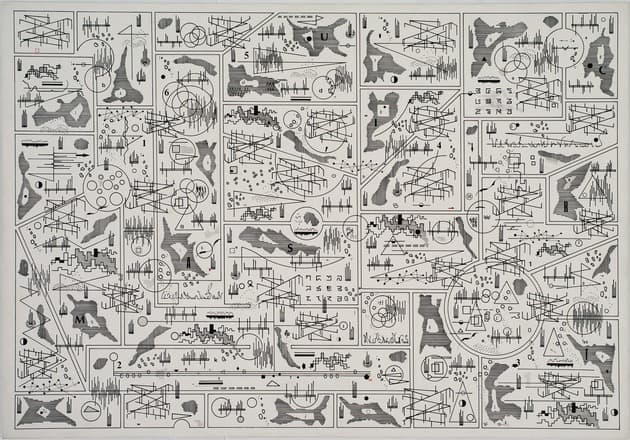
Bogusław Schaeffer, PR – I VIII, 1972. Drawing on paper. Muzeum Sztuki, Łódź. Courtesy of Muzeum Sztuki
Visual inspiration also affected the composers who worked at PRES. Many of their autonomous works bear titles relating to the visual arts, and especially to modernist art forms and techniques (Bogusław Schaeffer’s Collage [1965], Assemblage [1966], and Mobile [1972], and Eugeniusz Rudnik’s Ready Made [1977]). In the case of Bogusław Schaeffer, who was the author of one of the first happenings in Poland8In 1964 his piece “Non-stop” was performed in Krakow by John Tilbury and Zygmunt Krauze in an environment designed by Tadeusz Kantor, Marian Warzecha, and Kazimierz Mikulski., there are direct links to the visual sphere. He writes plays and directs his own theater pieces, and his experiments with graphic scores clearly reveal collage as a primary inspiration. Schaeffer and later Zygmunt Krauze were also inspired by Władysław Strzemiński’s theory of Unism, which called for the absolute homogeneity of painting.9In his essay on Unism in painting (“Unizm w malarstwie,” Biblioteka Praesens, no. 3, Warszawa 1928), Strzemiński laid out his theory of the autonomy, organic unity, and inner logic of painting. Schaeffer’s composition Hommage à Strzemiński (1967) incorporates fragments of Strzemiński’s book Theory of Vision (Teoria widzenia).10Władysław Strzemiński, Teoria widzenia (Krakow: Wydawnictwo Literackie, 1958). The radical artist’s writings that were to describe the new vision were “here confronted with an experimental sonic environment using panoramic sound effects and inducing in listeners specific auditory illusions. These illusory perceptual structures bring surprises. With the help of technology, the composer creates a phenomenon that listeners perceive as the new hearing.”11See: Bolesław Błaszczyk, “Bogusław Schaeffer w Studiu Eksperymentalnym Polskiego Radia” Adopting the extreme unity of form that Strzemiński proclaimed for painting, Schaeffer created a composition in which sounds from heterogeneous sources are combined into a unified and horizontal whole.
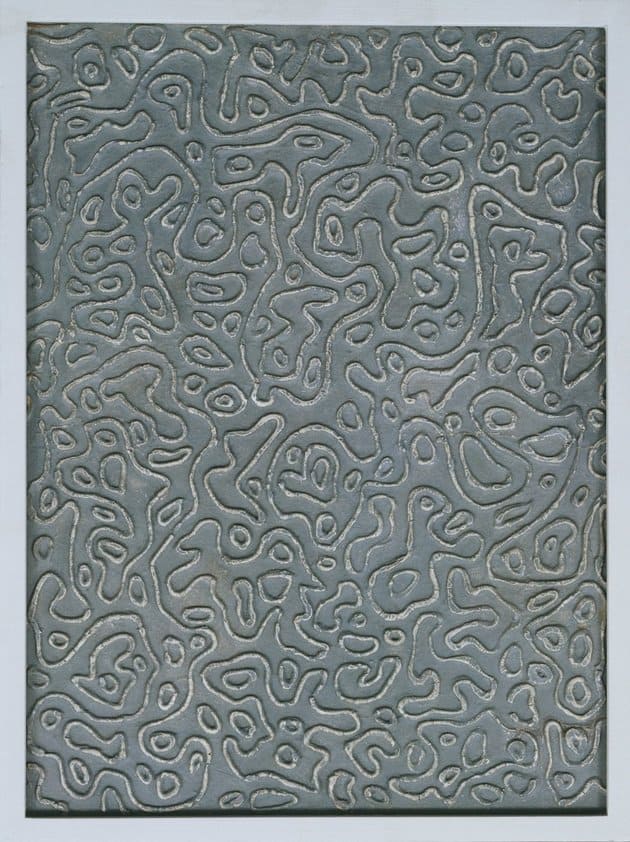
The influence of visual art on PRES sound engineer and composer Eugeniusz Rudnik produced very different results. Rudnik’s main job at PRES entailed creating sounds for the cinema, which required him to adhere to the standard synchronization of sound and image. Independently, however, he created a unique form of what the French composer Luc Ferrari called anecdotic music.12By anecdotic music Ferrari meant electroacoustic compositions that introduce a narrative element that connects it with everyday life. Rudnik composed using readily available material—fragments of tape that were the byproducts of the radio production that surrounded him. This method points to the indirect inspiration of Surrealism and assemblage techniques employed by the Polish artist Władysław Hasior, among others. Titles such as Ready Made suggest that Rudnik was not only interested in creating surprising sound collages, but was also concerned with the status of individual recordings, which through his acts of appropriation became surrounded by other sound objects.
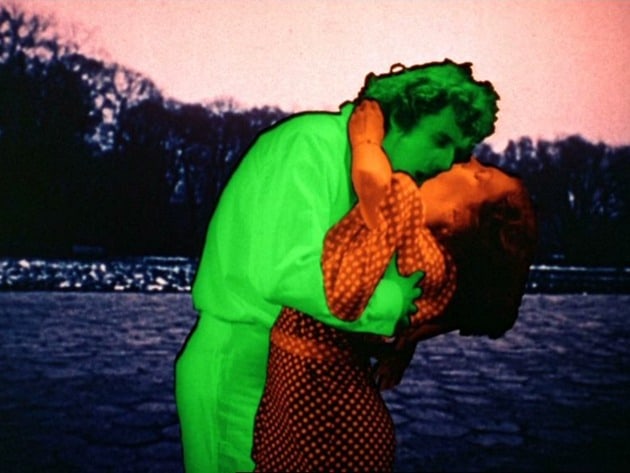
Visual art was not the only extra-acoustic field to which PRES was drawn. Poland’s cultural Thaw coincided with the growing popularity of cybernetics13The translation of Cybernetics and Society, by Norbert Wiener, was published in 1961. among a new generation of engineers who were developing computer technology. Patkowski and Szlifirski were eager for PRES to play a role in this revolution and treated the Studio not only as a production unit, but also as a research facility with scientific aspirations. They started by translating Fritz Winkel’s book Phänomene des musikalishen Hörens14Fritz Winkel, Osobliwości słyszenia muzycznego (Warsaw: PWN, 1965). and campaigned constantly for computers to be brought into the Studio, which they intended to be the most advanced of its kind. Attempting to unite visionary sound potential with state-of-the-art technology, they approached Jacek Karpiński, who in early 1970 designed and produced one of the world’s first mini-computers, to ask him to design new machines. Their plans were invariably blocked by insufficient funding as well as the dwindling interest of the Polish Radio’s management.
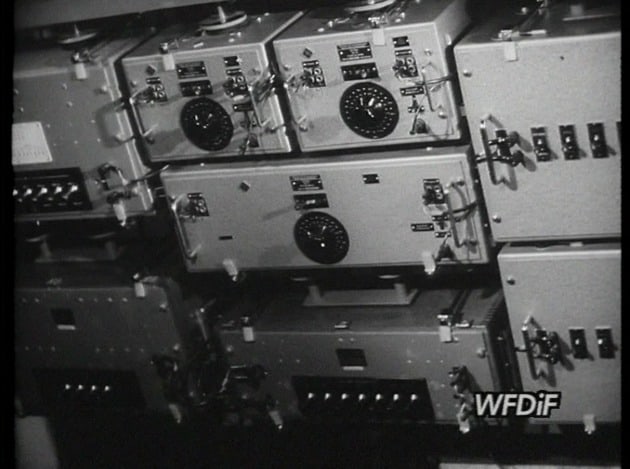
Few of the compositions created in the Experimental Studio of the Polish Radio meet the most radical criteria of experimental music as defined by Pierre Schaeffer. The composer who came the closest was perhaps Boguław Schaeffer, who introduced polyversional music and with it, great freedom of execution. The works Schaeffer composed in this vein show that each performance is to some extent a sketch, and just one among an infinite number of interpretations of the piece. Describing the music as experimental was an up-to-date way of presenting it to an uninitiated public. And yet, the music produced at the Studio could be hard to find, for although PRES was intended by the authorities to be token proof of artistic freedom, the art produced there was reserved mostly for contemporary music festivals and late-night radio broadcasts. On the other hand, audiences of mainstream and art house films alike were exposed to works composed at the Studio. This had a dual effect: while the aesthetics of electroacoustic sound were widely known, often in connection with science fiction, the music itself was anonymous. This duality raises further questions: Why did the composers who worked at the Studio never venture into mainstream music, which was a common practice at the GRM (Pierre Henry) and at BBC’s Radiophonic Workshop (White Noise)? Why did the authorities lose interest in supporting the Studio, a lapse which led to its demise in the 1980s? And finally, why did they not promote the activities and achievements of PRES? That failure resulted, until recently, in obscuring this chapter in Poland’s cultural history.
- 1Pierre Schaeffer, “Vers une musique expérimentale,” La Revue musicale 236 (Paris: Richard-Masse, 1957).
- 2John Cage in 1958 formulated a very different, more descriptive definition of the term “experimental”: “What is the nature of an experimental action? It is simply an action the outcome of which is not foreseen,” John Cage, “History of Experimental Music in the United States,” in John Cage, Silence (London: Marion Boyars, 1968), p. 69.
- 3Marc Pierret, Entretiens avec Pierre Schaeffer (Paris: P. Belfond, 1969), p. 105.
- 4Club d’Essai is the original name of the institute, which has grown into GRM (Groupe de recherches musicales) and is nothing more than a club of essays being understood as trials.
- 5In Polish: Eksperymentalne Studio Polskiego Radia. Sometimes also translated as “Experimental Studio of Polish Radio.”
- 6The Workshop of the Film Form (“Warsztat Formy Filmowej,” also called Film Form Studio), was composed of neo-avant-garde filmmakers based in Łódź between 1970 and 1977. Among the members were Józef Robakowski, Wojciech Bruszewski, and Ryszard Waśko. They were seeking to renew the language of cinema by experimenting with its form.
- 7“Całkowicie stracić kontrolę. Z Józefem Robakowskim rozmawia Arek Gruszczyński,” in: Magda Roszkowska, Bogna Świątkowska [eds.] Studio Eksperyment, (Warszawa: Bęc Zmiana, 2012), p. 43.
- 8In 1964 his piece “Non-stop” was performed in Krakow by John Tilbury and Zygmunt Krauze in an environment designed by Tadeusz Kantor, Marian Warzecha, and Kazimierz Mikulski.
- 9In his essay on Unism in painting (“Unizm w malarstwie,” Biblioteka Praesens, no. 3, Warszawa 1928), Strzemiński laid out his theory of the autonomy, organic unity, and inner logic of painting.
- 10Władysław Strzemiński, Teoria widzenia (Krakow: Wydawnictwo Literackie, 1958).
- 11See: Bolesław Błaszczyk, “Bogusław Schaeffer w Studiu Eksperymentalnym Polskiego Radia”
- 12By anecdotic music Ferrari meant electroacoustic compositions that introduce a narrative element that connects it with everyday life.
- 13The translation of Cybernetics and Society, by Norbert Wiener, was published in 1961.
- 14Fritz Winkel, Osobliwości słyszenia muzycznego (Warsaw: PWN, 1965).

